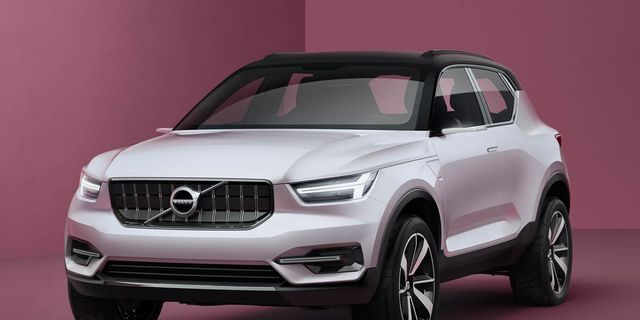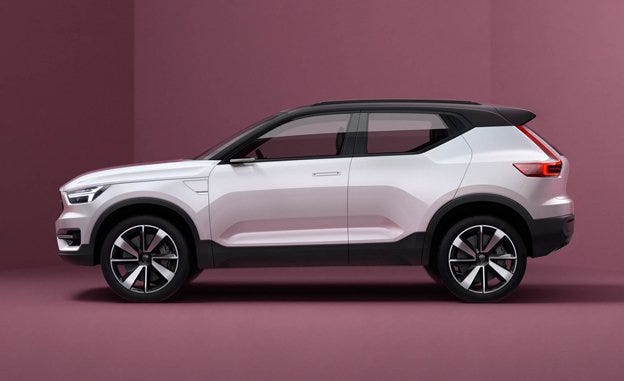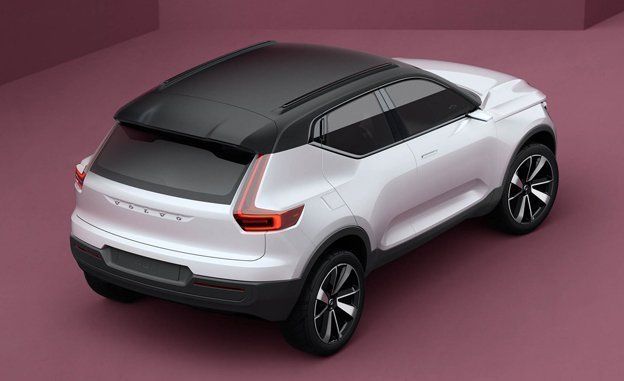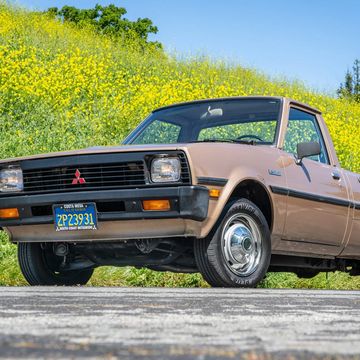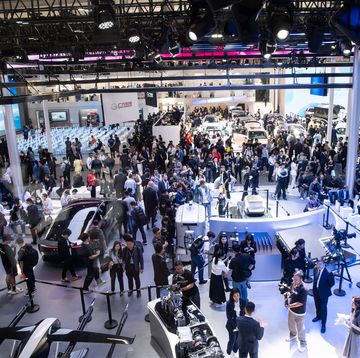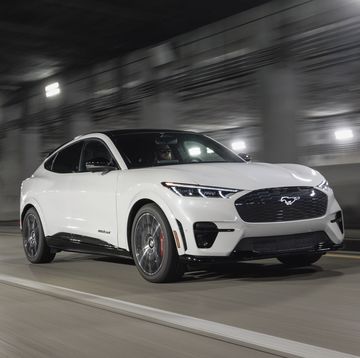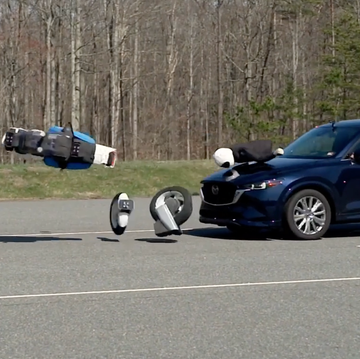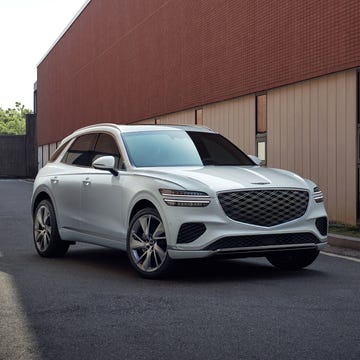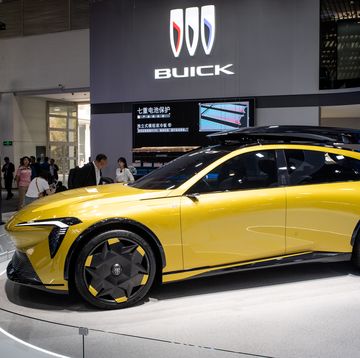Picture the auto industry as The Jungle Book, and you could cast Volvo as Mowgli. A scrappy player abandoned by Ford that reappeared in the Chinese wilderness, Volvo had to burn most of its lineup to the ground—C30, C70, S80, S40, V50, V70—before it could walk out reborn and acclaimed by luxury-minded consumers. The 40-series cars have been dead in America since 2011, although a V40 hatchback has continued trolling around in Europe since. What we have now is the future 40-series foretold in a compact crossover dubbed Concept 40.1 (and a compact notchback sedan called the Concept 40.2, which we’ve covered separately). Their names may sound as scintillating as a Firefox browser update, but this striking pair represents a set of lightly disguised production cars scheduled to enter production during the 2017 calendar year.
The 40.1 is Volvo’s first application of its all-new Compact Modular Architecture (CMA), a separate chassis for lighter, smaller cars that’s distinct from the Scalable Product Architecture (SPA) underpinning the XC90, S90, V90, and next-generation S60/V60. Essentially, what you see in the 40.1 is what we’ll get in the XC40. Exact specs aren’t out, and the interior is just a mockup, but Volvo says the production model will include the “world’s most advanced standard package of safety features”; the company’s recently introduced, portrait-oriented Sensus infotainment system; and the light-colored matte wood and brushed metal that Scandinavian architects can’t live without. Semi-autonomous driving, which Volvo calls Pilot Assist, also will be offered, as will a digital-key app that can allow anyone the owner chooses to remotely unlock and start the car without using a physical fob.
The 40.1 shares design cues with the handsome XC90, including its swept-back roof, Thor’s Hammer LED running lights, and waterfall-style taillights. But this smaller model’s liftgate is more steeply raked, and the beltline heads sharply north ahead of the rear fenders, which are visually connected by U-shaped creases along the entire door panels. Propped up on its suspension and with black plastic cladding wrapping short overhangs, the 40.1 looks even more trail-ready than an XC90 switched to its off-road ride height (as if you ever see Volvos driven on a trail). Part of the tall stance has to do with Volvo chief designer Thomas Ingenlath’s insistence on “wheel size to body proportion,” which allows a small car to fit big, trendy rims without absurd fender add-ons.
Several powertrains will be offered across the 40-series. A 1.5-liter turbocharged three-cylinder engine, an unspecified turbocharged four-cylinder, and a plug-in hybrid that Volvo confusingly labels as “Twin Engine T5” all will be available. Various diesels will serve overseas but aren’t destined for the U.S. As we’ve reported, the three-cylinder engine should make close to 200 horsepower all by itself, fitted to a six-speed manual or automatic transmission (the current eight-speed can’t fit in this platform, and don’t count on a stick headed here). Volvo says the Twin Engine T5 powertrain’s 9.7-kWh lithium-ion battery and 74-hp electric motor will supplement the inline-three and send roughly 250 combined horsepower through an all-new seven-speed dual-clutch automatic. As in the XC90 T8, the hybrid battery is mounted longitudinally in the central tunnel in place of a rear driveshaft. All-wheel drive, granted by a second rear-mounted electric motor, may be optional.
Adding the dual-clutch transmission to the hybrid makes for a complex beast. The electric drive motor is tied to the transmission’s output shaft aft of the clutch but also connects directly to the even-numbered ratios through a separate set of gears. In reverse, second, fourth, and sixth, the motor helps drive the gears on that shaft, while in the remaining, odd-numbered ratios it applies power to the output shaft. This electric supplement is available all the time. Volvo promises up to 31 miles of all-electric range, although we’re not yet certain how this setup will dramatically improve performance or efficiency compared with other plug-in hybrid powertrains (BMW, for example, uses a conventional automatic that connects to the electric motor at its input shaft). An all-electric model will be reserved for what becomes of the Concept 40.2.
Volvo needs the EV and hybrid versions to sell like hotcakes if it really expects to sell one million plug-ins by 2025, a goal we still don’t find plausible given the company’s current and projected sales. But if these new 40-series cars look and drive as well as the XC90, the company stands to accelerate its upward trajectory.
Clifford Atiyeh is a reporter and photographer for Car and Driver, specializing in business, government, and litigation news. He is president of the New England Motor Press Association and committed to saving both manuals and old Volvos.
